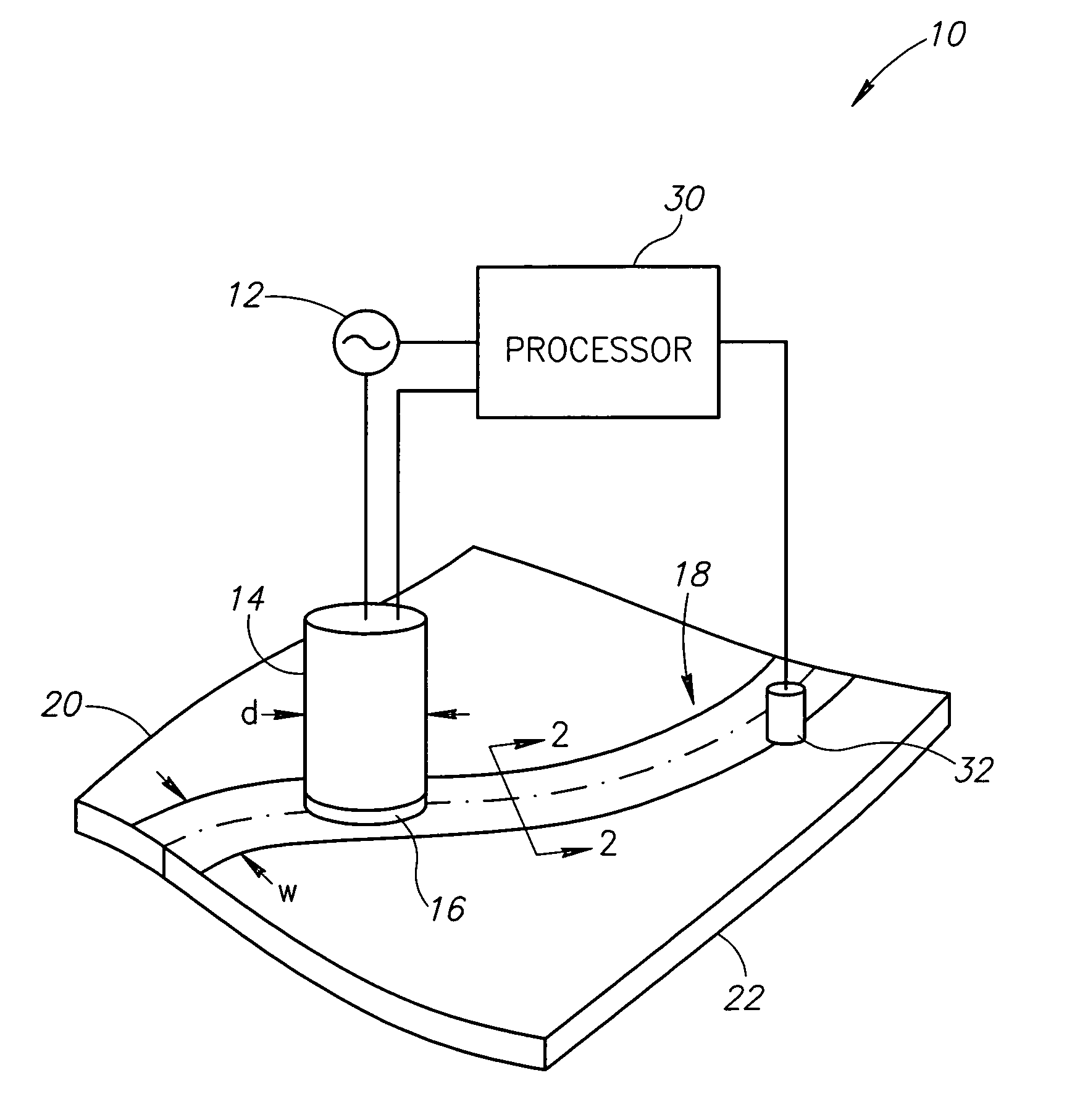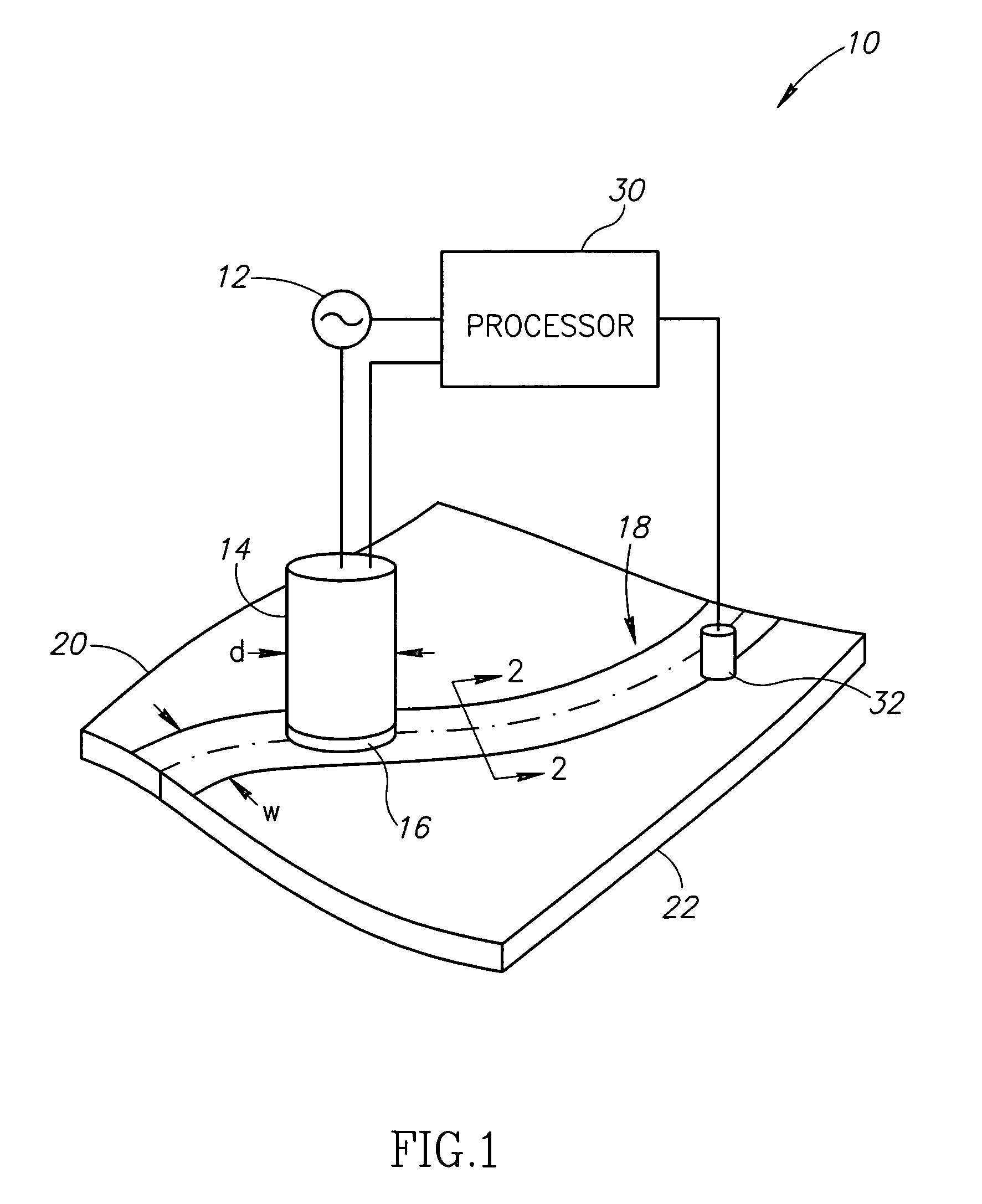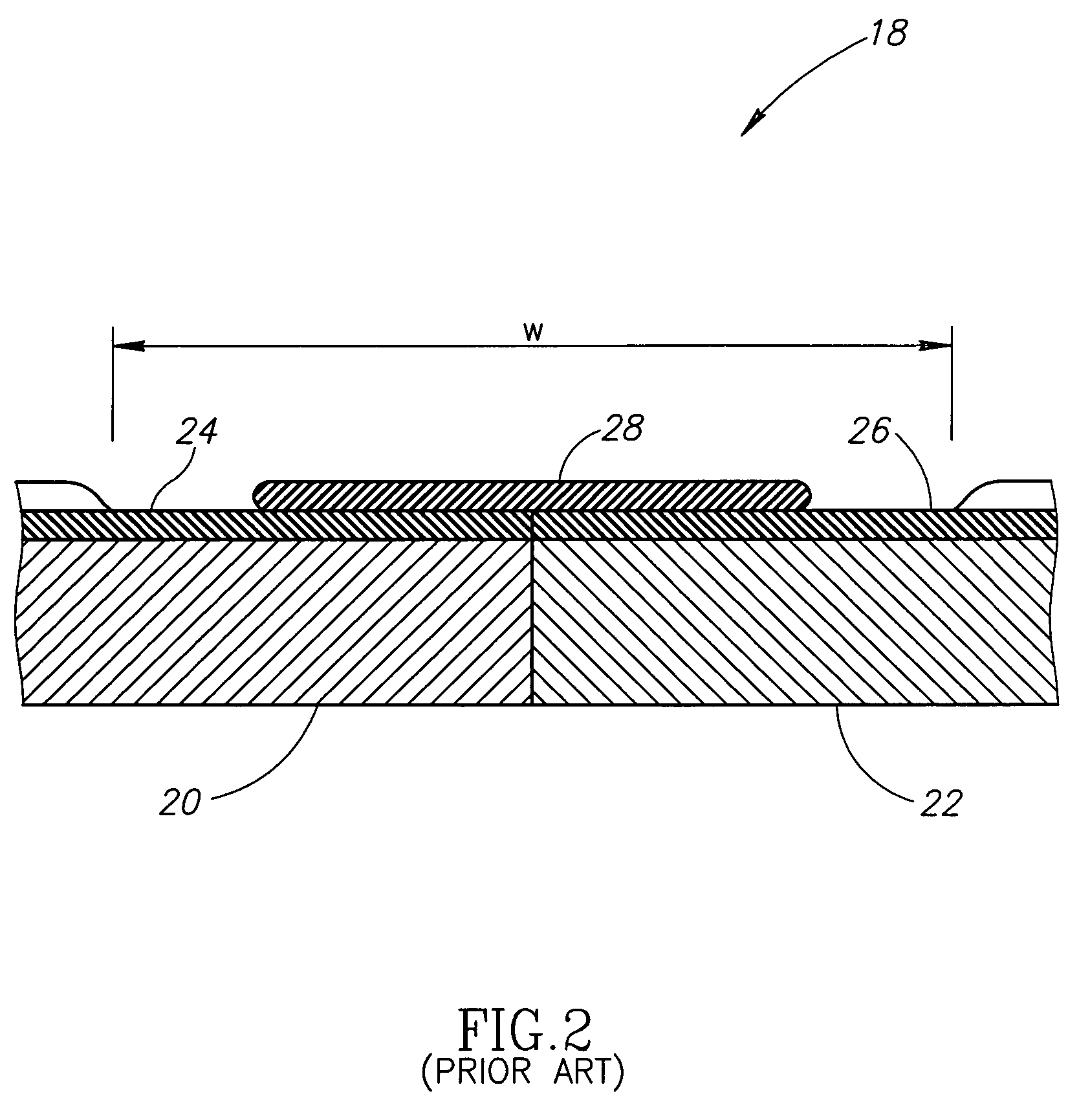Systems and methods for inspecting electrical conductivity in composite materials
a composite material and electrical conductivity technology, applied in the direction of resistance/reactance/impedence, material magnetic variables, instruments, etc., can solve the problems of prone to error, difficult surface conductivity measurement methods, and relative poor electrical conductivity of fiber-reinforced composite skin panels
- Summary
- Abstract
- Description
- Claims
- Application Information
AI Technical Summary
Benefits of technology
Problems solved by technology
Method used
Image
Examples
Embodiment Construction
[0016]The present invention relates to systems and methods for inspecting electrical conductivity in composite materials, and in particular, to the inspection of electrical conductivity in electrical bonding regions. Many specific details of certain embodiments of the invention are set forth in the following description and in FIGS. 1 through 7 to provide a thorough understanding of such embodiments. One skilled in the art, however, will understand that the present invention may have additional embodiments, or that the present invention may be practiced without several of the details described in the following description.
[0017]FIG. 1 is a partial schematic view of a system 10 for inspecting an electrical bonding region, according to an embodiment of the invention. The system 10 includes an alternating current source 12 that is configured to generate an alternating current having a desired frequency. In one specific embodiment, the source 12 is configured to generate the alternating...
PUM
| Property | Measurement | Unit |
|---|---|---|
| frequency | aaaaa | aaaaa |
| frequency | aaaaa | aaaaa |
| frequency | aaaaa | aaaaa |
Abstract
Description
Claims
Application Information
 Login to View More
Login to View More - R&D
- Intellectual Property
- Life Sciences
- Materials
- Tech Scout
- Unparalleled Data Quality
- Higher Quality Content
- 60% Fewer Hallucinations
Browse by: Latest US Patents, China's latest patents, Technical Efficacy Thesaurus, Application Domain, Technology Topic, Popular Technical Reports.
© 2025 PatSnap. All rights reserved.Legal|Privacy policy|Modern Slavery Act Transparency Statement|Sitemap|About US| Contact US: help@patsnap.com



